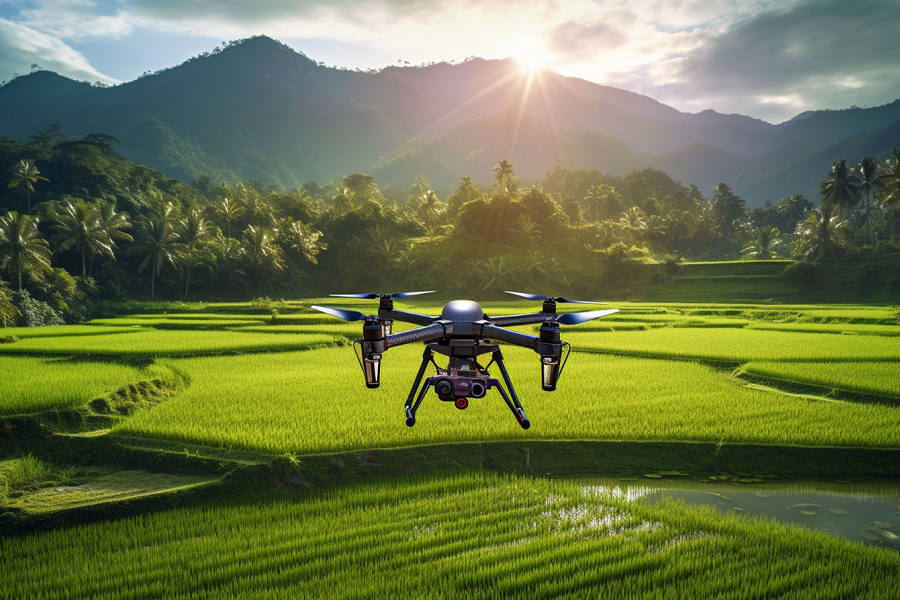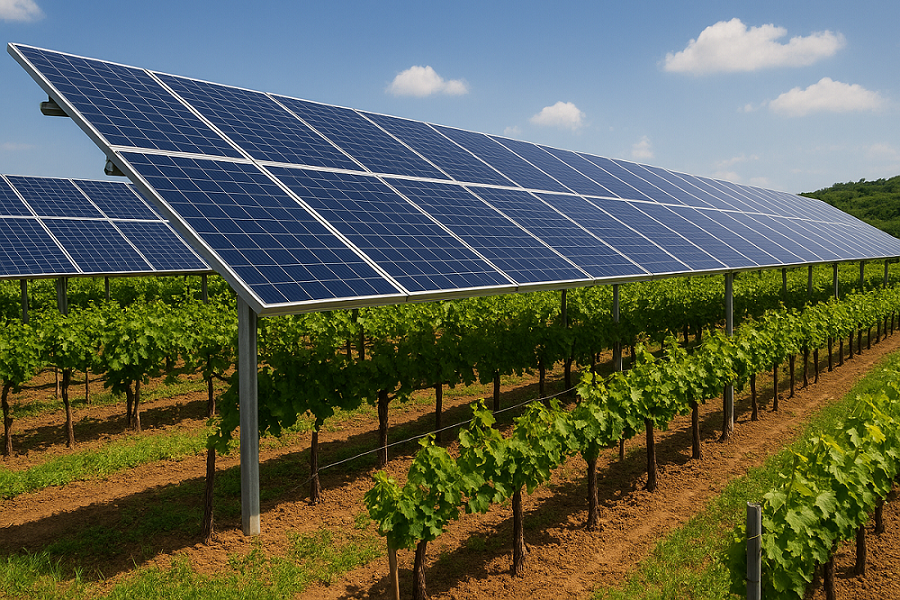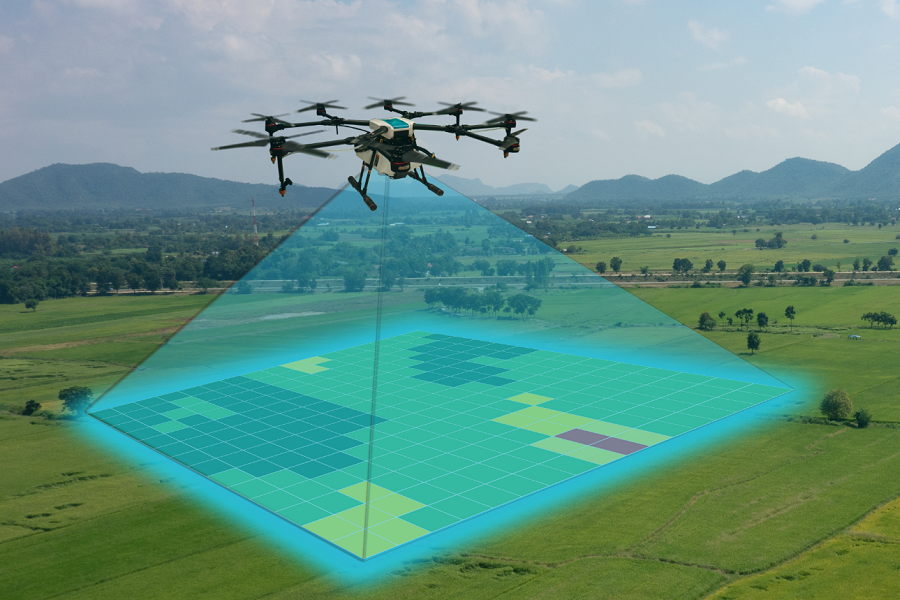by Antonio Donnangelo
Share
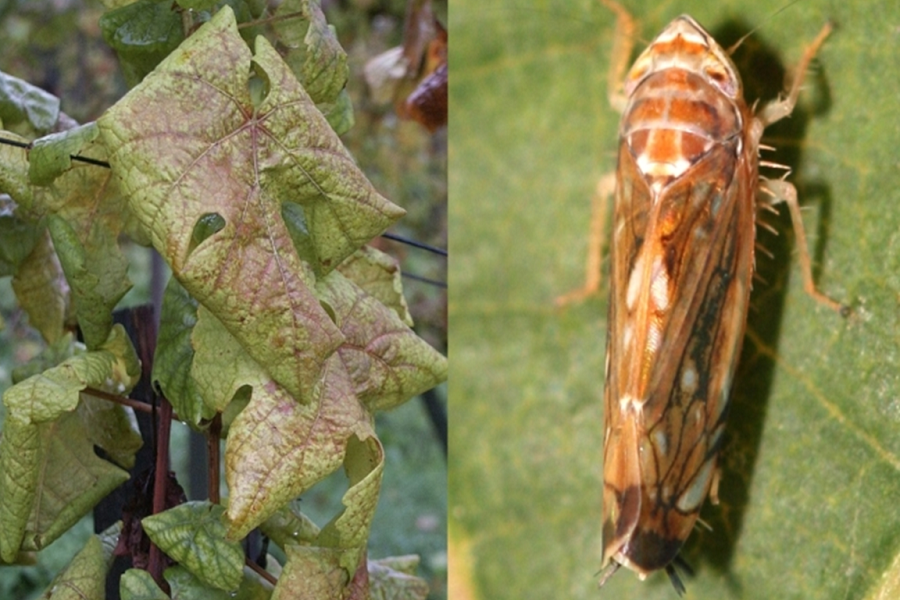
Introduction
Flavescence dorée is a very serious disease affecting grapevine plants caused by a phytoplasma that affects the vascular system of plants. Flavescence dorée can spread rapidly through a vector insect, the
Scaphoideus titanus
, a cicada that carries out its cycle within the vineyard. By feeding on infected vines, Scaphoideus acquires phytoplasma remaining infectious throughout its life cycle.
This disease is a significant problem for the wine industry, which is why Italian authorities and wine professionals have adopted several strategies to combat this pest, including monitoring programs, promotion of appropriate agronomic practices, and awareness campaigns to involve wine growers in the fight against the disease.
Monitoring obligation
Flavescence dorée is a disease included among the quarantine pests of relevance to the European Union; therefore, it is subject to compulsory phytosanitary control, according to Reg. EU 2019/2072 of 28/11/2019. Being subject to compulsory control, flavescence dorée requires monitoring in order to identify symptomatic plants to implement measures to contain the disease.
Monitoring of flavescence dorée by drone
Currently, flavescence dorée monitoring is based on visual observation by trained operators who check for characteristic symptoms such as leaf crumpling, yellowing/reddening, and degeneration of shoots.
Visual monitoring of flavescence by agricultural operators certainly has some disadvantages. Subjectivity of interpretation, coverage limitations, diagnostic timelines, and visual fatigue are all factors that can affect the effectiveness and accuracy of monitoring. To overcome these drawbacks, automated technologies can be used to improve the efficiency and objectivity of disease monitoring, such as the use of drones.
Recently, researchers at the ècole d’ingénieurs de Purpan in France published a paper on this very topic. The objective of the work was to assess the feasibility of discriminating flavescence dorée symptoms in red (Gamay and Duras) and white (Colombard and Sauvignon) cultivars against healthy vegetation using drone remote sensing images (Fig. 1).
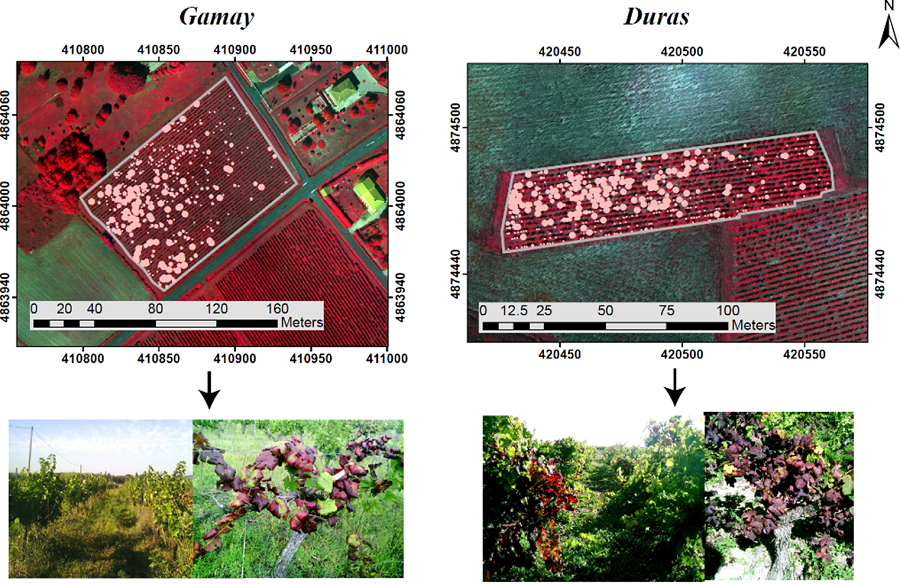
Fig.1: False-color drone orthophoto of the 2 selected red grape vineyards (Gamay and Duras) and location of all infected vines. The size of the pink circles varies according to the severity of the disease. The two images below each orthophoto give an overview of the vineyard and show an example of an infected vine.
From the analysis of the results, it was possible to discriminate diseased vine plants from healthy ones. The best results were recorded with red varieties, in which thanks to some indices (RGI and GRVI) the researchers showed strong discrimination between the pixels of diseased and healthy plants. As for the white varieties, the results were less significant. The researchers conclude that by taking pixel classification error into consideration, an operational flavescence dorée mapping technique can be proposed using remote sensing drone images.
Conclusions
Drone monitoring of flavescence dorée with a drone could offer several advantages in disease control and management, enabling early detection, early intervention and better strategic planning to preserve vine health and grape production.
Due to its very high spatial resolution and flexible flight planning, detection of flavescence by drone is of great interest because symptoms are often distributed in small patches and may only be visible for short periods during the year. Regular drone monitoring would allow early detection of signs and symptoms of flavescence dorée, enabling winegrowers to intervene quickly by taking preventive measures to limit the spread of the disease and minimize damage. In addition, compared with traditional monitoring methodologies, drones can cover larger areas in less time and reach areas that are difficult to access, such as steep slopes or uneven terrain, allowing them to reduce overall operating costs.
Through systematic and regular monitoring of vineyards over time, accurate documentation of vine conditions over the seasons can be obtained, enabling a better understanding of trends and patterns of disease spread. This information can be useful for long-term strategic planning and more effective preventive measures.

